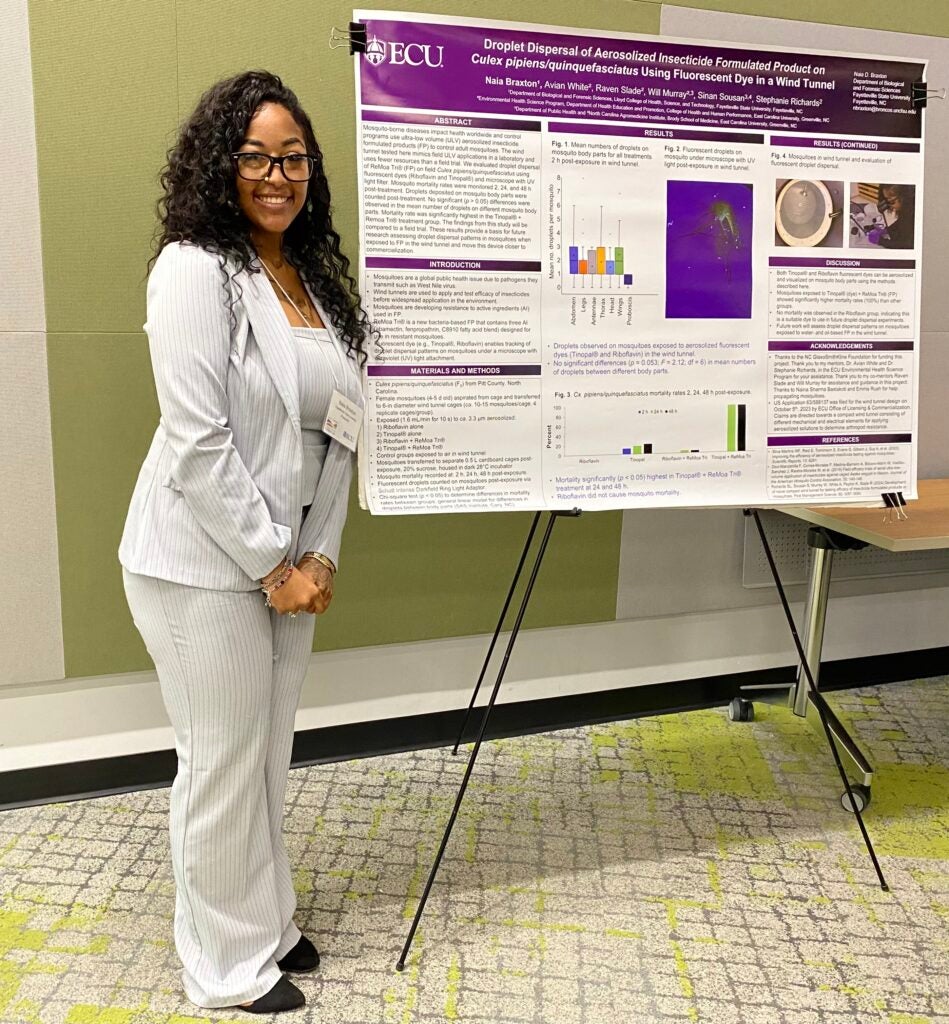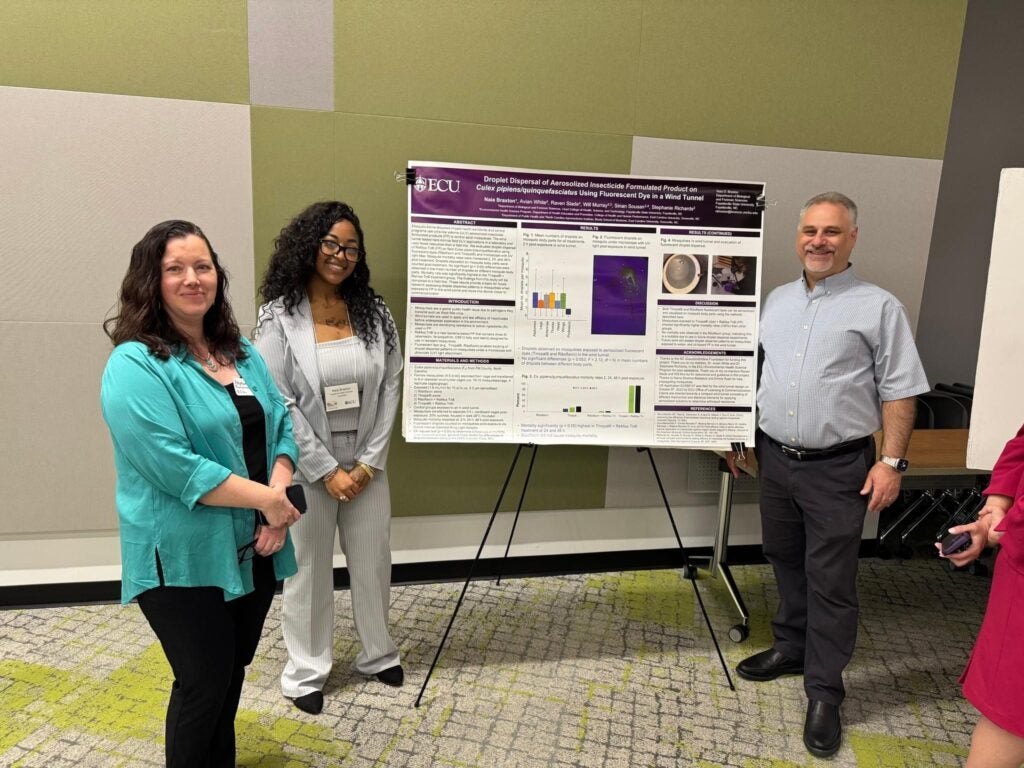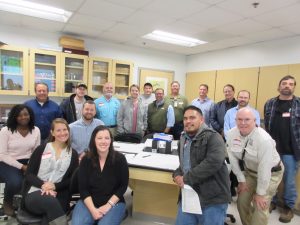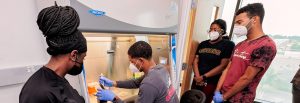The 2nd annual NC GlaxoSmithKline Foundation STEM Summer Research Poster Symposium was held today at the ECU Life Sciences and Biotechnology Building. The symposium had a great turnout and was very well attended with about 50-55 people. This event was the culmination of 2 months of research and professional development for 12 undergraduate students from North Carolina university, including Chowan University, Fayetteville State University (FSU), NC Central University, University of North Carolina Pembroke and North Carolina Agricultural and Technical State University. The students lived in an ECU dorm and worked on research across campus in Biology, Environmental Health, and Public Health.
Naia Braxton is an undergraduate student from FSU that was mentored by Dr. Stephanie Richards, Dr. Avian White and MS Environmental Health students Will Murray and Raven Slade. Dr. Sinan Sousan (ECU Department of Public Health) was also involved as a co-author on Naia’s poster.
Student: Naia Braxton
ECU Mentors: Dr. Stephanie Richards and Dr. Avian White
ECU Graduate Student Co-Mentors: Will Murray and Raven Slade
Author List: Naia Braxton, Avian White, Raven Slade, Will Murray, Sinan Sousan and Stephanie RichardsTitle: Droplet dispersal of aerosolized insecticide formulated product on Culex pipiens/quinquefasciatus using fluorescent dye in a wind tunnel
Abstract: Mosquito-borne diseases impact health worldwide. Mosquito control agencies use ultra-low volume (ULV) application of aerosolized insecticide formulated products (FP) to control adult mosquitoes in the field. The wind tunnel tested here mimics ULV applications in a laboratory setting and uses considerably fewer resources than a field trial. We evaluated droplet dispersal of ReMoa Tri® FP on field Culex pipiens/quinquefasciatus using two fluorescent dyes (Riboflavin and Tinopal®) and dissecting microscope with UV light filter. Mosquito mortality rates were monitored 2, 24, and 48 h post-treatment. Droplets deposited on different mosquito body parts were counted immediately post-treatment. No significant (p>0.05) differences were observed in the mean number of droplets on different mosquito body parts. Mortality rate was significantly highest in the Tinopal®+Remoa Tri® treatment group. The findings from this study will be compared to a field trial. These results provide a basis for future research assessing droplet dispersal patterns in mosquitoes when exposed to FP in the wind tunnel and move this device closer to commercialization.







